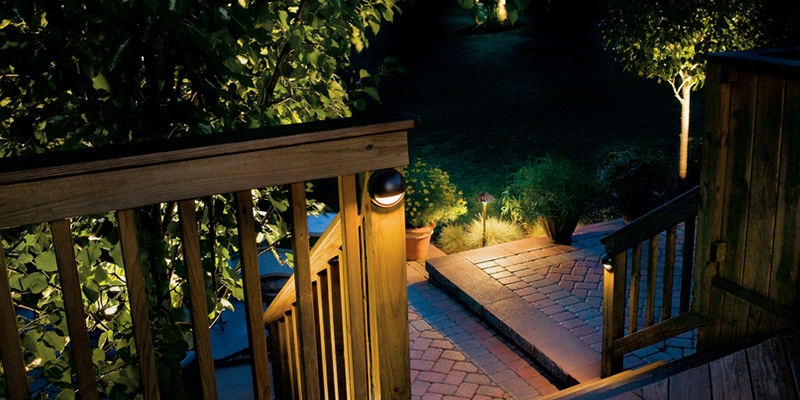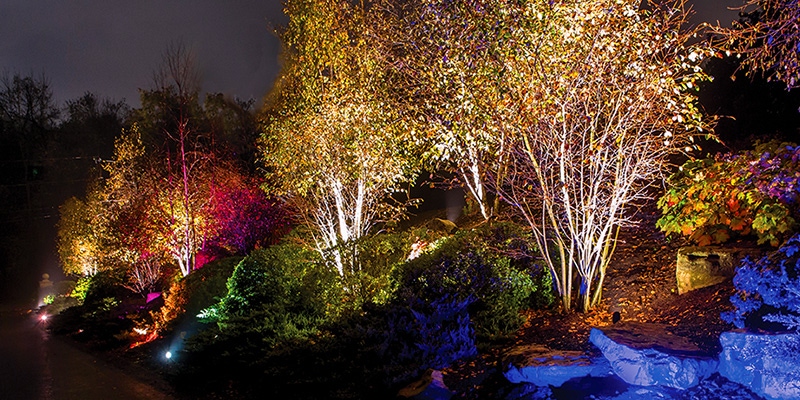Always Here for You.
Lighting Warehouse offers direct support to customers. We always have your back.

FEATURED ARTICLE
Published: 10/18/2022
Homeowners can enrich their landscapes with vibrant colors thanks to RGBW LED outdoor lighting fixtures, regardless of holiday or occasion. Aesthetics aside, RGBW lights provide better lighting quality, less energy consumption, heightened lighting efficiency, and more control. Let’s quickly explore these RGBW LED benefits and how they can improve your business operations, your bottom line, and your customer satisfaction.
A substantially better improvement from RGB LEDs, RGBW refers to the four standard colors found in LED chips: red, green, blue, and white. The added white color employs a more versatile and precise assortment of colors to achieve full-color lighting as well as enhance the brightness of the other colors. Because RGBW LED lights contain a higher Color Rendering Index, they can more explicitly reproduce the object’s original color. RGBW LED outdoor lights are also programmed at one-hundred-percent light output with 2700 K color temperature, the most common type used in landscape lighting.
Still not convinced RGBW lighting is the better option? Let’s dive a little further into the pros and cons of RGBW and RGB lights.

RGB LEDs may combine the fundamental red, green, and blue photons to produce white light. The mixture of blending and diffusion makes this light fictitious, supported by its somewhat foggy appearance. This type of fabricated light gives people an unpleasant visual experience due to the foggy light. RGBW LEDs, on the other hand, create cleaner white light and lower saturation color light, resulting in a more appealing visual experience. Furthermore, the addition of white light LED provides a larger spectrum of distinct color shadings of hues and a more versatile color arrangement selection.

RGBW not only depicts a more accurate replication, but it uses less power from their higher light transmission, making them more efficient-heavy than their RGB predecessors. You would think the added White component would impose an opposite, energy-draining effect. So, why is this not the case?
Traditional RGB LED generate lower-brightness light. In order to increase the illumination brightness, a bigger LED amount is required. The problem is that an enhanced amount of LED can increase both the cost of production and the amount of consumed energy. RGBW LEDs are the ideal solution as they produce the same brightness with fewer LEDs. Also, RGBW lights can be used as a stand-alone white light whereas RGB lights must run all three colors simultaneously to generate something that favors a blurry or foggy white thereby using a lot of energy, resulting in higher utility bills. That’s correct—RGB lights cost more to produce less realistic depictions.

RGBW LEDs have a higher lighting efficiency from their hiked light transmittance. Unlike RGB light which absorbs and mixes some light, RGBW LED light reflects all the light without wasting it, boosting lighting efficiency. To sum up, RGBW lights offer brighter light while using the same levels of energy as their RGB counterparts.
RGBW LED strips allow for more control over LED lighting. Though gently pricier, these strips provide significantly more lighting possibilities. Using the controller, RGB and RGBW LEDs can be changed to different hues, such as white, red, green, blue, pink, yellow, and cyan using the controller.
For more information regarding RGBW LED landscape lighting, or to get more lighting tips, contact our in-house Customer Service team to get you on the right path.

Kevin B. Goode
Product Specialist at Lighting Warehouse